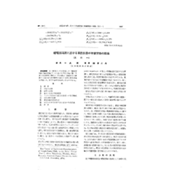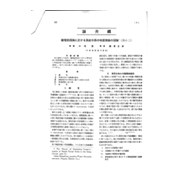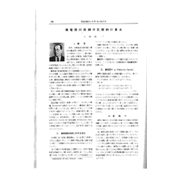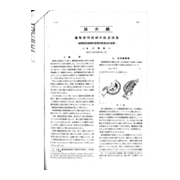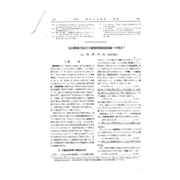Switching theory forms the basis of computer theory, which is also called Boolean algebra, logical algebra or logical mathematics. Japan achieved some world-class results in this field.
Akira Nakajima, who worked on the design of relay circuits for devices like remote monitor/controllers and switchboards at NEC, considered the idea of logically handling techniques which, at that time, involved a sort of genius-level intuition. Nakajima's research began by extracting the basic principles from his predecessors' results on relay circuit design, and developed into a theory which took account of functions of time where the contact actuation impedance takes a value of either 0 or infinity. If the impedance of each contact is indicated with a symbol, such as A or B, and serial and parallel connection of two contacts are indicated, respectively, as A + B and A x B, and equal impedance is indicated as A = B, he discovered that the operation symbols (+, x, etc.) obey laws completely different from the arithmetic operations in elementary algebra. This system was exactly the same as Boolean algebra, but at that time, Nakajima was unaware of the existence of Boolean algebra.
Two years after Nakajima announced his results in the Transactions of the Institute of Electronics and Communication Engineers of Japan, Shannon produced a paper with the same content, and it was this paper which became famous among academic societies throughout the world, and Shannon enjoyed the honor of being the founder of switching theory.
At the urging of Yasujiro Niwa, Kanichi Ohashi of the Electro Technical Institute read a paper which Nakajima wrote for the Nippon Electric Monthly Bulletin and was fascinated by it, but for Ohashi too, this was his first contact with Boolean algebra. Ohashi noted that Nakajima's theory was only a theory of relay contact circuit networks, i.e. combinatorial circuits, and he proposed a theory of relay circuits which took into account the delay from the time the current applied to a relay coil changes until the contact actuates. This theory employed a function equation which explicitly included time as a variable of the switching function, and Ohashi devised an original operational calculus to solve this function equation, but the mathematical method of solution was difficult.
Mochinori Goto, a researcher younger than Ohashi at the Electro Technical Institute, studied Ohashi's theory, and to make the method of solution easier, he expanded the logical algebra to incorporate time delay in the logical function, and he called this logical mathematics. With this he solved equations containing an unknown logical function -- i.e. a logical function equation -- and thereby determined relay circuit operation as a function of time, successfully analyzing and configuring such circuits via calculation.


